-
ARTÍCULO ORIGINAL16/12/2024
Respectful care for postpartum women with sickle cell disease: a netnographic study
Revista Brasileira de Enfermagem. 2024;77(6):e20230545
Resumen
ARTÍCULO ORIGINALRespectful care for postpartum women with sickle cell disease: a netnographic study
Revista Brasileira de Enfermagem. 2024;77(6):e20230545
DOI 10.1590/0034-7167-2023-0545
Visualizações1Ver maisABSTRACT
Objectives:
to analyze principles of respectful maternity care in narratives of postpartum women with sickle cell disease, relating them to Sustainable Development Goals.
Methods:
netnographic study, with two videos published in 2020. Deductive iconographic and thematic analysis by Respectful Maternity Care Charter, organized in MAXQDA.
Results:
principles identified were the right to: freedom from harm and ill-treatment; information, informed consent, refusal of medical procedures, and respect for their choices and preferences including companion; be considered a person from birth, with dignified and respectful treatment; health at the highest possible level; newborns being with their parents or guardians. The Sustainable Development Goals for women by 2030 were not positively contemplated in postpartum women’s experience.
Final Considerations:
it is appropriate that health workers qualify themselves to provide respectful maternity care, with qualified listening, understanding, and resolution of unique demands of postpartum women with sickle cell disease, seeking equality in care for women.
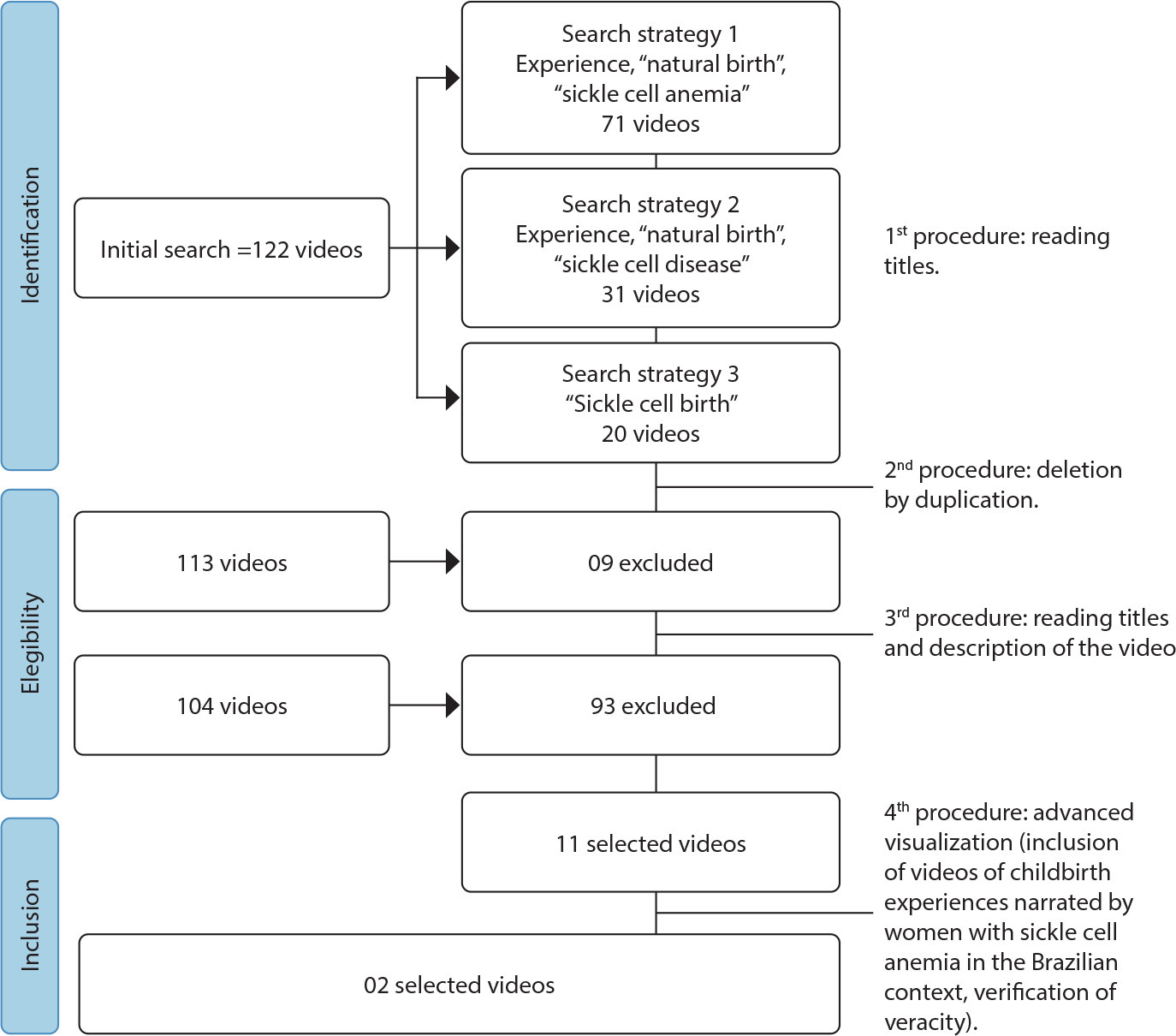
-
16/12/2024
GerenciaDOR™: development of digital technology by nurses for the assessment of patients with chronic pain
Revista Brasileira de Enfermagem. 2024;77(6):e20240050
Resumen
GerenciaDOR™: development of digital technology by nurses for the assessment of patients with chronic pain
Revista Brasileira de Enfermagem. 2024;77(6):e20240050
DOI 10.1590/0034-7167-2024-0050
Visualizações0Ver maisABSTRACT
Objectives:
to develop a digital technological solution (prototype) for assessing patients with chronic pain.
Methods:
this is a methodological and technological development study based on the Human-Centered Design framework and the principles of Patient-Centered Care. The prototype guides patients through a body diagram and directs them to an evaluation using specific instruments that address the multidimensional aspects of chronic pain.
Results:
the GerenciaDOR* project enables navigation through the Web App screens, providing access to pain assessment features up to the presentation of results.
Final Considerations:
the study describes a systematic approach to pain assessment and expands nurses’ knowledge in pain management. Additionally, it can promote the development of other digital technologies for chronic pain assessment and contribute to a multidisciplinary, patient centered treatment.
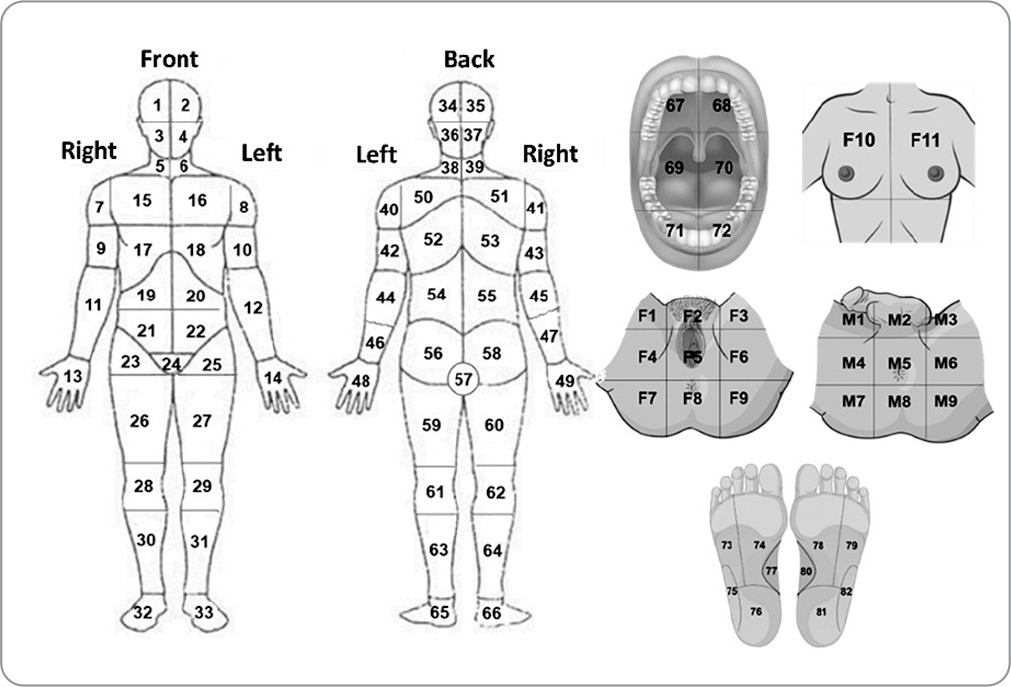
-
ARTÍCULO ORIGINAL16/12/2024
Psychometric analysis of ProQOL-BR in nursing: building hospital safety and protection
Revista Brasileira de Enfermagem. 2024;77(6):e20240085
Resumen
ARTÍCULO ORIGINALPsychometric analysis of ProQOL-BR in nursing: building hospital safety and protection
Revista Brasileira de Enfermagem. 2024;77(6):e20240085
DOI 10.1590/0034-7167-2024-0085
Visualizações0Ver maisABSTRACT
Objectives:
to analyze the psychometric properties of the ProQOL-BR instrument in hospital nursing professionals.
Methods:
a methodological study to validate the ProQOL-BR. Confirmatory factor analysis, assessment of local and global adjustment quality, Pearson hypothesis testing and Cronbach’s alpha internal consistency analysis were used.
Results:
a total of 490 professionals participated. The model presents adequate quality due to factor weights (λ≥ 0.40), acceptable overall fit quality and adequate chi-square ratio and degrees of freedom (χ2/g.1=2.51) for the parameters of CFI (0.923), GFI (0.902), TLI (0.914) and RMSEA (0.042). In terms of validity, it was shown to be adequate with CC=0.89. The internal consistency obtained by standardized Cronbach’s alpha was 0.761. Criterion validity was shown to be favorable with significant correlations (0.001).
Conclusions:
the instrument was validated regarding content, criteria and reliability. Three questions were removed from the original instrument, ProQOL-BR, leaving the final instrument with 25 questions.
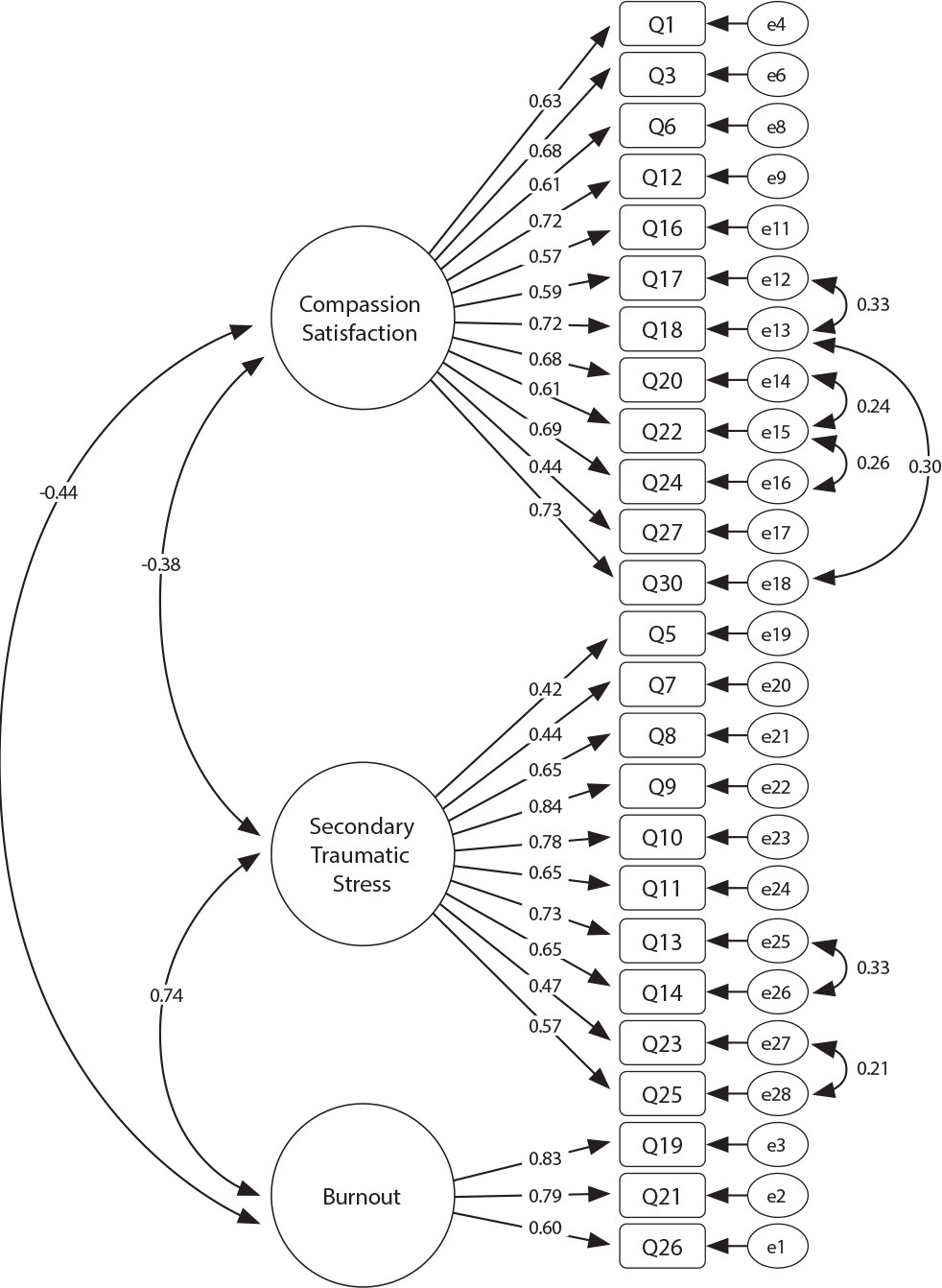
-
ARTÍCULO DE REVISIÓN16/12/2024
Recommendations for guidelines for promoting mental health in the workplace: an umbrella review
Revista Brasileira de Enfermagem. 2024;77(6):e20240086
Resumen
ARTÍCULO DE REVISIÓNRecommendations for guidelines for promoting mental health in the workplace: an umbrella review
Revista Brasileira de Enfermagem. 2024;77(6):e20240086
DOI 10.1590/0034-7167-2024-0086
Visualizações1Ver maisABSTRACT
Objectives:
to summarize the recommendations of guidelines for promoting mental health in the workplace.
Methods:
an umbrella review, according to Joanna Briggs Institute and Preferred Reporting Items for Systematic reviews and Meta-Analyses methodological assumptions. Data collection was carried out in January 2021 and updated in July 2023 in the American Psychological Association, Cochrane Library, EMBASE, National Library of Medicine, and Scopus databases. Systematic reviews that assessed guidelines with recommendations for mental health care for workers were included. PROSPERO registration CRD42023461845.
Results:
four systematic reviews published between 2015 and 2018 were identified. The abstracts highlighted actions that facilitate and inhibit the recommendations as well as three categories of intervention: primary prevention – worker protection; secondary prevention – promoting workers’ mental health; and tertiary prevention – supporting, monitoring and rehabilitating workers upon returning to work.
Conclusions:
the interventions are based on prevention, promotion and early recognition, support and rehabilitation of mental health problems.
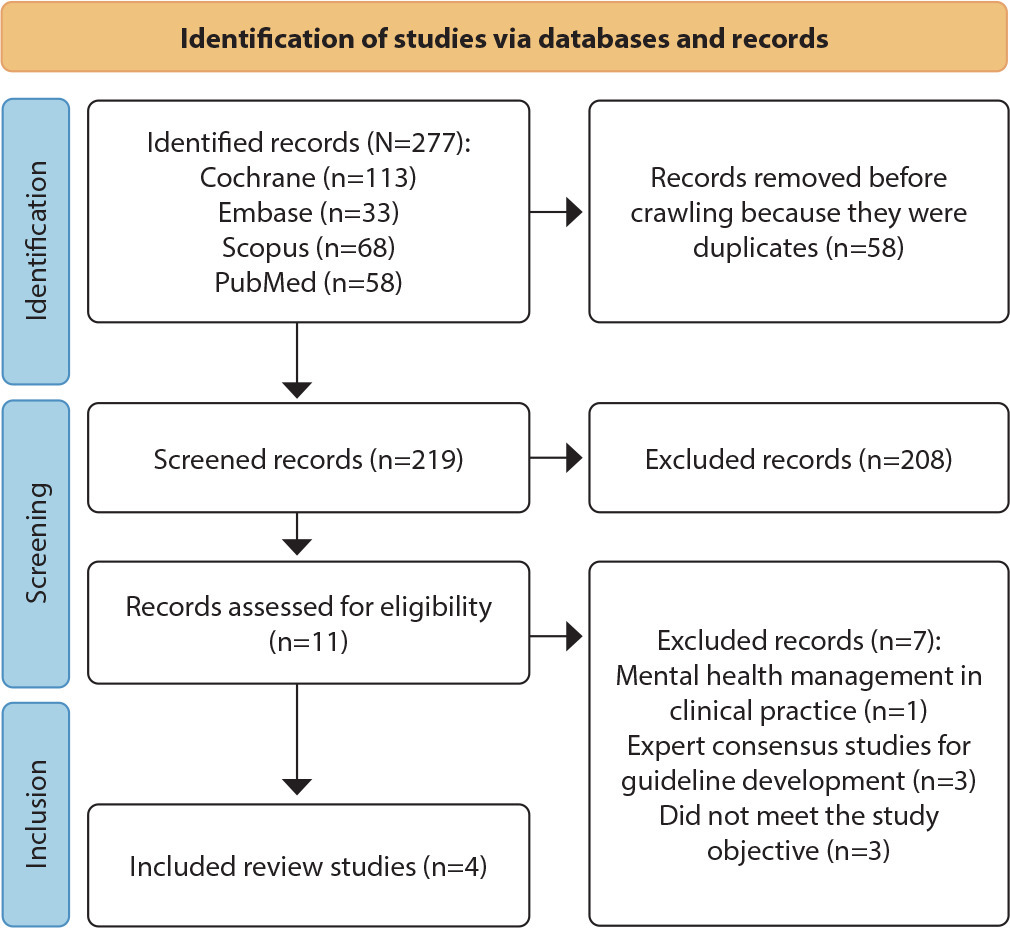
-
ARTÍCULO ORIGINAL16/12/2024
Analysis of omission of antimicrobial doses in Intensive Care Units
Revista Brasileira de Enfermagem. 2024;77(6):e20240102
Resumen
ARTÍCULO ORIGINALAnalysis of omission of antimicrobial doses in Intensive Care Units
Revista Brasileira de Enfermagem. 2024;77(6):e20240102
DOI 10.1590/0034-7167-2024-0102
Visualizações0Ver maisABSTRACT
Objectives:
to analyze the rate of antimicrobial dose omission in intensive care units.
Methods:
cross-sectional study carried out between March 1 and September 30, 2023, in intensive care units of a University Hospital in Rio de Janeiro.
Results:
the sample consisted of 452 prescriptions and 1467 antimicrobial doses. The dose omission rate was 4.29%. Each antimicrobial prescribed increased the chance of omission by 51%. The strategy of double-checking prescriptions helped prevent 30% of antimicrobial dose omissions (p=0.0001).
Conclusions:
monitoring the omission of antimicrobial doses can guide nursing actions to improve quality and patient safety, contributing to the prevention of medication errors, antimicrobial stewardship and the fight against antimicrobial resistance.
-
ARTÍCULO ORIGINAL16/12/2024
Health literacy development of Primary Health Care patients: qualitative research
Revista Brasileira de Enfermagem. 2024;77(6):e20240154
Resumen
ARTÍCULO ORIGINALHealth literacy development of Primary Health Care patients: qualitative research
Revista Brasileira de Enfermagem. 2024;77(6):e20240154
DOI 10.1590/0034-7167-2024-0154
Visualizações0Ver maisABSTRACT
Objectives:
to identify the process of health literacy development among primary care patients, relating it to their self-care practices.
Methods:
qualitative, prospective research with 22 patients from two Family Health Strategy units. Data were obtained through individual semi-structured interviews, examined through descriptive statistics and thematic content analysis.
Results:
the results discuss how participants learn about health and how this resonates in their behaviors, culminating in two thematic categories: “Health knowledge construction”; and “Dialogue between health knowledge construction and patient care actions”.
Final Considerations:
health knowledge is developed mainly through interpersonal relationships, mediated by health professionals through bonding and communication. Community educational actions and training of health professionals in communication can promote health literacy and self-care among patients.
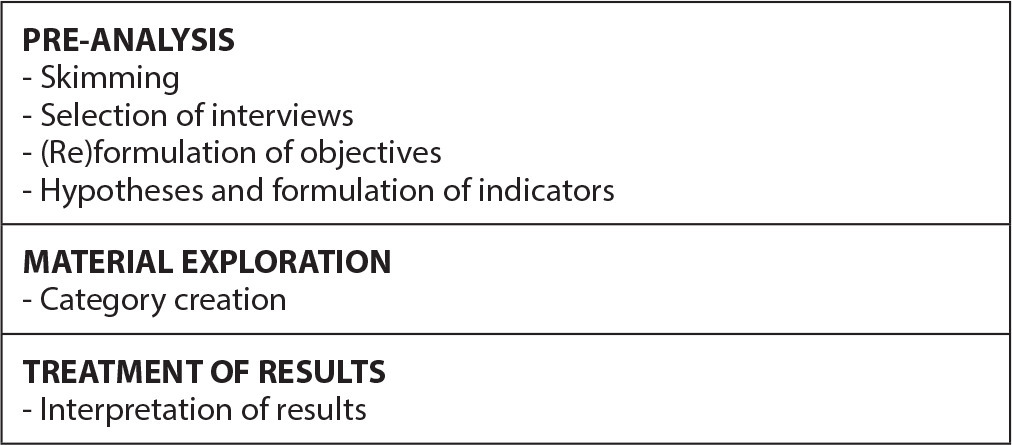
-
ARTÍCULO ORIGINAL16/12/2024
Bladder ultrasound: evidence of content validity of a checklist for training nurses
Revista Brasileira de Enfermagem. 2024;77(6):e20230183
Resumen
ARTÍCULO ORIGINALBladder ultrasound: evidence of content validity of a checklist for training nurses
Revista Brasileira de Enfermagem. 2024;77(6):e20230183
DOI 10.1590/0034-7167-2023-0183
Visualizações0Ver maisABSTRACT
Objectives:
to develop and analyze evidence of content validity of a checklist for training nurses in measuring bladder volume through ultrasound.
Methods:
a methodological study, consisting of three stages: literature review; instrument item preparation; and analysis of evidence of content validity. The Content Validity Index (CVI) and Gwet’s AC2 were used for content validity analyses.
Results:
the checklist consisted of 23 items. The CVIs for clarity, relevance and dimensionality were 0.99, 0.99 and 0.98 respectively, and the CVIs for Gwet’s AC2 with coefficients for clarity, relevance and dimensionality were 0.89, 0.97 and 0.95, respectively, with p<0.001.
Conclusions:
the checklist developed for training nurses in measuring bladder volume through ultrasound achieved adequate evidence of content validity, and can be used to train nurses in clinical practice and future research.
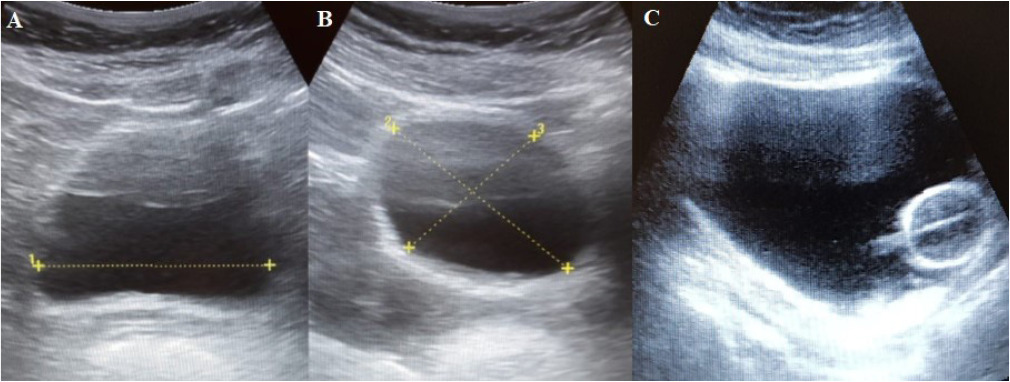
-
16/12/2024
A relação entre gênero, formação educacional e ambiente de aprendizagem com a ansiedade do estudante de enfermagem
Revista Brasileira de Enfermagem. 2024;77(6):e20220615
Resumen
A relação entre gênero, formação educacional e ambiente de aprendizagem com a ansiedade do estudante de enfermagem
Revista Brasileira de Enfermagem. 2024;77(6):e20220615
DOI 10.1590/0034-7167-2022-0615
Visualizações1Ver maisRESUMEN
Objetivos:
identificar las variables asociadas a la práctica clínica relacionadas con la ansiedad de los estudiantes de enfermería.
Métodos:
se utilizó un diseño descriptivo, cuantitativo, correlacional con las recomendaciones STROBE, EQUATOR. La población fue de 233 estudiantes de enfermería con una muestra de 135 personas. Los datos se recopilaron de marzo a abril de 2022 utilizando instrumentos validados.
Resultados:
la prueba de chi-cuadrado y razón de verosimilitud significativa para género, formación académica y entorno de aprendizaje son superiores a 0.05, por lo que no existe una relación significativa entre las variables y la ansiedad de los estudiantes.
Conclusiones:
los estudiantes necesitan prepararse nuevamente antes de ingresar al campo de la práctica. Investigaciones cualitativas también son necesarias.
-
ARTÍCULO ORIGINAL15/08/2022
Reiki for promotion of health and sleep quality in hospital nursing professionals
Revista Brasileira de Enfermagem. 2022;75(5):e20210535
Resumen
ARTÍCULO ORIGINALReiki for promotion of health and sleep quality in hospital nursing professionals
Revista Brasileira de Enfermagem. 2022;75(5):e20210535
DOI 10.1590/0034-7167-2021-0535
Visualizações0Ver maisABSTRACT
Objectives:
to know the repercussions of a Reiki therapy intervention on the sleep quality of nursing professionals working in a general hospital.
Methods:
a qualitative-quantitative study conducted with 16 professionals from the nursing team of a hospital in northwest Paraná, who participated in an intervention consisting of six weekly Reiki sessions. Data collected from September, 2019 to March, 2020 through semi-structured interviews and application of the Pittsburgh Sleep Quality Index before and after the intervention.
Results:
better sleep quality, characterized by a reduction in the time to fall asleep and in nightmares, and an increase in sleeping hours.
Conclusions:
reiki intervention had a positive impact on the sleep quality of participants.
-
ARTÍCULO ORIGINAL09/05/2022
Para além da tecnologia: a inteligência artificial pode apoiar decisões clínicas na predição da sepse?
Revista Brasileira de Enfermagem. 2022;75(5):e20210586
Resumen
ARTÍCULO ORIGINALPara além da tecnologia: a inteligência artificial pode apoiar decisões clínicas na predição da sepse?
Revista Brasileira de Enfermagem. 2022;75(5):e20210586
DOI 10.1590/0034-7167-2021-0586
Visualizações0Ver maisRESUMO
Objetivo:
Analisar os alarmes críticos preditores de deterioração clínica/sepse para tomada de decisão clínica nos pacientes internados em complexo hospitalar de referência.
Métodos:
Estudo observacional de coorte retrospectivo. A ferramenta de Machine Learning (ML), Robô Laura®, pontua alterações nos parâmetros vitais e exames laboratoriais, classificando-os por gravidade. Incluíram-se pacientes internados e maiores de 18 anos.
Resultados:
Extraíram-se 122.703 alarmes da plataforma, classificados de 2 até 9. A pré-seleção dos alarmes críticos (6 a 9) apontou 263 alertas urgentes (0,2%), dos quais, após o filtro de critérios de exclusão, delimitaram se 254 alertas para 61 pacientes internados. A mortalidade dos pacientes por sepse foi de 75%, dos quais 52% devido à sepse relacionada ao novo coronavírus. Após os alarmes serem atendidos, 82% dos pacientes permaneceram nos setores. Conclusões: Muito além da tecnologia, modelos de ML podem agilizar a decisão clínica assertiva dos enfermeiros, otimizando tempos e recursos humanos especializados.
-
ARTÍCULO ORIGINAL26/09/2022
Participatory development of educational technology in seeking patient safety in maternity hospitals
Revista Brasileira de Enfermagem. 2022;75(5):e20210701
Resumen
ARTÍCULO ORIGINALParticipatory development of educational technology in seeking patient safety in maternity hospitals
Revista Brasileira de Enfermagem. 2022;75(5):e20210701
DOI 10.1590/0034-7167-2021-0701
Visualizações1Ver maisABSTRACT
Objectives:
to develop a booklet as an educational technology, together with health professionals, patients and companions, aiming at their involvement in patient safety in maternity hospitals.
Methods:
a qualitative convergent care study, carried out in three stages at a maternity hospital in Belo Horizonte. The booklet construction took place between February and April 2021, with 13 professionals, 06 companions and 11 patients.
Results:
data content analysis was performed, creating three categories: Knowledge and experiences about patient and newborn safety in maternity hospitals; Challenges for involving patient and companion in safety actions; Assessment of patients, companions and professionals on the booklet construction process. The booklet construction involved the participation of health professionals, users and companions in all stages of the process.
Final considerations:
the participatory process enabled the creation of educational technology for the involvement of patients and companions in patient safety actions.
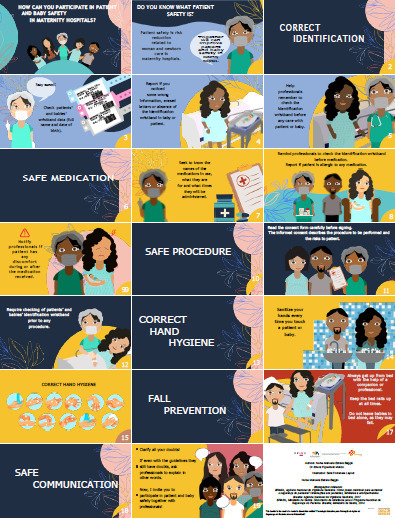
-
ARTÍCULO ORIGINAL29/07/2022
Cognitive-behavioral program to control lower urinary tract symptoms after radical prostatectomy: a randomized clinical trial
Revista Brasileira de Enfermagem. 2022;75(5):e20210818
Resumen
ARTÍCULO ORIGINALCognitive-behavioral program to control lower urinary tract symptoms after radical prostatectomy: a randomized clinical trial
Revista Brasileira de Enfermagem. 2022;75(5):e20210818
DOI 10.1590/0034-7167-2021-0818
Visualizações0Ver maisABSTRACT
Objective:
to assess the effectiveness of a cognitive-behavioral program to control lower urinary tract symptoms after radical prostatectomy.
Methods:
a randomized clinical trial study, with 41 participants randomized into intervention (n=20) and control (n=21), for three months. The intervention group received the cognitive-behavioral program, while the control group received routine guidance from the service. Outcome variables were urinary incontinence intensity and lower urinary tract symptoms, assessed by the Pad-Test and Urinary Incontinence Scale of Radical Prostatectomy and King’s Health Questionnaire.
Results:
at the end of the study, the intervention group had a lower urinary incontinence intensity (p≤0.001), and there were less chances of presenting changes in urinary frequency (p≤0.001), urinary urgency (p≤0.001), nocturia (p=0.005), stress urinary incontinence (p≤0.001) and urge incontinence (p≤0.045).
Conclusion:
the cognitive-behavioral program was effective in reducing lower urinary tract symptoms after radical prostatectomy. Brazilian Clinical Trial Registry: RBR-3sstqg.
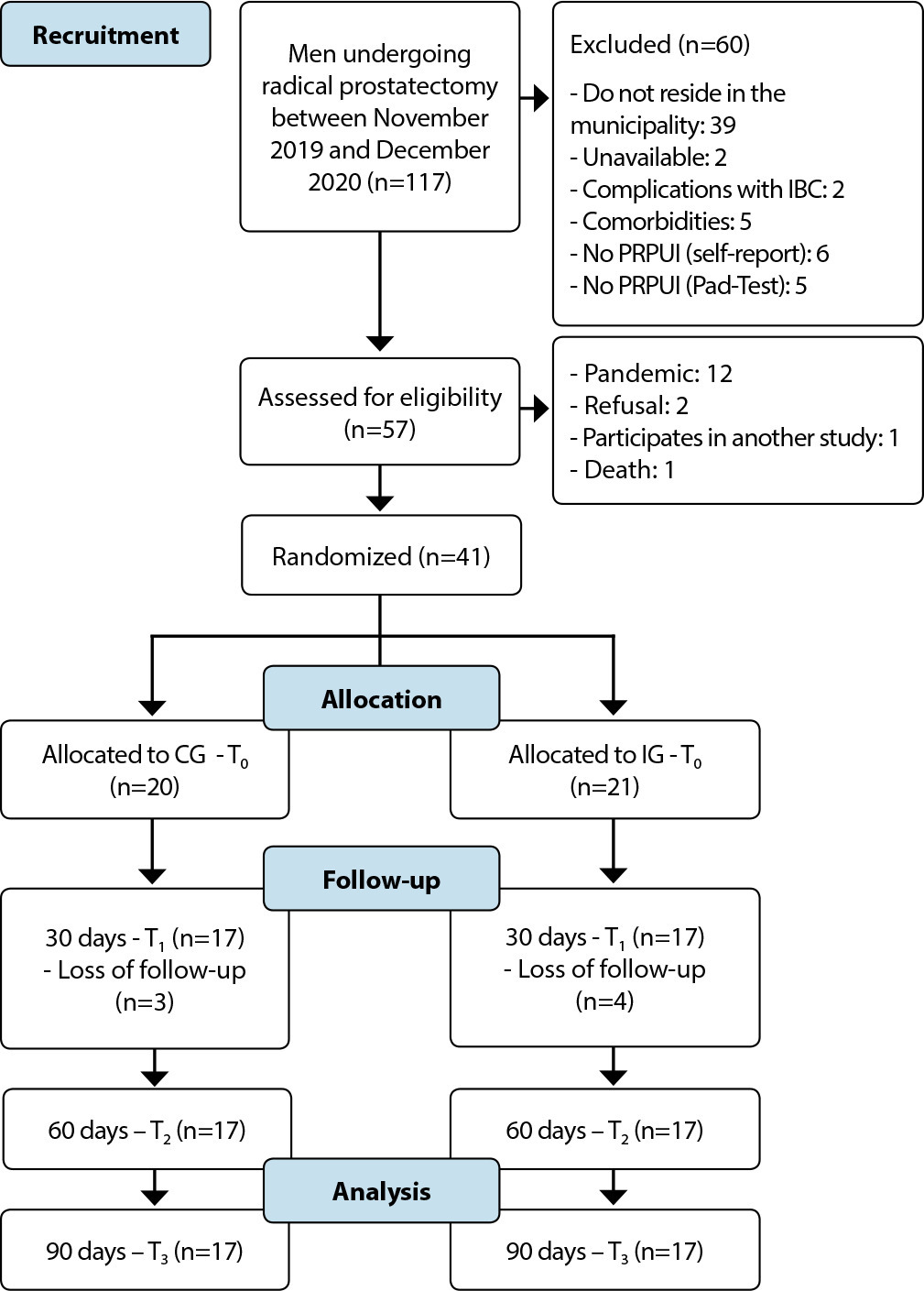
-
21/10/2022
Cancer symptom clusters: from the lab bench to clinical practice
Revista Brasileira de Enfermagem. 2022;75(5):e2022v75n5inov
Resumen
Cancer symptom clusters: from the lab bench to clinical practice
Revista Brasileira de Enfermagem. 2022;75(5):e2022v75n5inov
DOI 10.1590/0034-7167-2022v75n5inov
Visualizações0Ver maisABSTRACT
Objective:
to present and discuss the advancement of science in symptom management through research involving oncological symptom clusters (OSC).
Method:
a reflective study, supported by the scientific literature on OSC.
Results:
five key points are crucial to advancing the science of symptom management through research involving OSC: definition of OSC characteristics; underlying mechanisms and priority symptom clusters; OSC measurement; targeted and personalized interventions; new analytical strategies.
Final considerations:
a better understanding of the complex connections between different systems and biobehavioral aspects in patients, especially in the field of oncology nursing, is urgent. The study of these interactions has become increasingly promising and emerging for oncology nursing, since therapeutic interventions, whose target is the neuroimmunoendocrine axis, are relevant for personalized care, translating into greater scientific and nurse autonomy to care for patients.
-
ARTÍCULO ORIGINAL24/06/2022
Factors associated with the incidence of pressure wounds in critical patients: a cohort study
Revista Brasileira de Enfermagem. 2022;75(6):e20210267
Resumen
ARTÍCULO ORIGINALFactors associated with the incidence of pressure wounds in critical patients: a cohort study
Revista Brasileira de Enfermagem. 2022;75(6):e20210267
DOI 10.1590/0034-7167-2021-0267
Visualizações0Ver maisABSTRACT
Objectives:
to identify the incidence of pressure wound in critical patients and its associated factors.
Methods:
retrospective cohort study, based on the analysis of 369 critical patients’ records. Descriptive and inferential statistics were used, as well as logistic regression.
Results:
the incidence of pressure wounds was 11.4%. Patients who had been hospitalized for four days or more (OR 2.99; CI95% 1.15-7.78), used nasoenteric tubes (OR: 3.81; CI95%: 1.4010.38), vesical drainage catheters (OR: 4.78; CI95%: 1.31-17.38) and tracheostomy (OR: 3.64; CI95%: 1.48-8.97) had a higher chance of developing pressure wounds. The mean score of the Braden scale among participants who developed (14.2 points) pressure wounds was statistically different (p<0.001) than that of those who did not (12.3 points).
Conclusions:
the incidence of pressure wounds was associated with a higher time in the unit, the use of nasoenteric tubes, vesical drainage catheters, and tracheostomies were associated with a higher time of hospitalization in the unit.
-
ARTÍCULO ORIGINAL09/09/2022
Primary care nurses’ learning styles in the light of David Kolb
Revista Brasileira de Enfermagem. 2022;75(6):e20210986
Resumen
ARTÍCULO ORIGINALPrimary care nurses’ learning styles in the light of David Kolb
Revista Brasileira de Enfermagem. 2022;75(6):e20210986
DOI 10.1590/0034-7167-2021-0986
Visualizações0Ver maisABSTRACT
Objectives:
to identify primary care nurses’ learning styles in the light of David Kolb’s Experiential Learning Theory.
Methods:
a descriptive and exploratory qualitative study. A semi-structured interview script was used for data collection and content analysis for data processing.
Results:
primary care nurses showed different learning styles: diverging, which combines active experimentation and reflective observation; assimilating, which combines reflective observation and abstract conceptualization; converging, which associates abstract conceptualization and concrete experience; and accommodating, which unites concrete experience and active experimentation.
Final Considerations:
learning through experience requires that knowledge be understood and transformed. Nurses learn in different ways, as they have different learning styles. Therefore, recognizing nurses’ learning styles is important to foster ongoing professional development and ensure safe nursing care.
-
ARTÍCULO ORIGINAL26/11/2022
Assistência em saúde mental na Atenção Primária: perspectiva dos profissionais da Estratégia Saúde da Família
Revista Brasileira de Enfermagem. 2022;75:e20190326
Resumen
ARTÍCULO ORIGINALAssistência em saúde mental na Atenção Primária: perspectiva dos profissionais da Estratégia Saúde da Família
Revista Brasileira de Enfermagem. 2022;75:e20190326
DOI 10.1590/0034-7167-2019-0326
Visualizações0RESUMO
Objetivo:
Apreender as percepções dos profissionais que atuam na Atenção Primária à Saúde sobre a assistência em saúde mental.
Métodos:
Estudo descritivo, qualitativo, realizado com 29 profissionais de saúde, mediante entrevistas abertas e individuais. Adotou-se o software IRaMuTeQ® para organização dos dados, após a qual foram submetidos ao processo de análise de conteúdo de modalidade temática.
Resultados:
Da análise de conteúdo, emergiramse três classes: “Percepções sobre o atendimento de saúde realizado no município”, “O paradigma biomédico na assistência de saúde mental”, “Elementos para a construção de um novo fazer profissional em saúde mental”.
Considerações finais:
Notou-se que, apesar da boa infraestrutura dos serviços e de os profissionais apontarem alguns elementos para a construção de um novo fazer profissional, eles não o realizam, recaindo, maiormente, sobre o psicólogo a responsabilidade de conduzir tais atividades.
Palavras-chave: Assistência à Saúde MentalAtenção Primária à SaúdeEnfermagemEstratégia Saúde da FamíliaPolítica de SaúdeVer mais
Búsqueda
Buscar en:
Nuvem de Tags
Adolescente (85) Atenção Primária à Saúde (239) COVID-19 (91) Criança (91) Cuidados de Enfermagem (269) Educação em Enfermagem (151) Educação em Saúde (139) Enfermagem (930) Enfermagem Pediátrica (86) Estudantes de Enfermagem (77) Estudos de Validação (131) Família (87) Idoso (208) Promoção da Saúde (99) Qualidade de Vida (104) Saúde do Trabalhador (86) Saúde Mental (145) Saúde Pública (82) Segurança do Paciente (150) Tecnologia Educacional (100)



